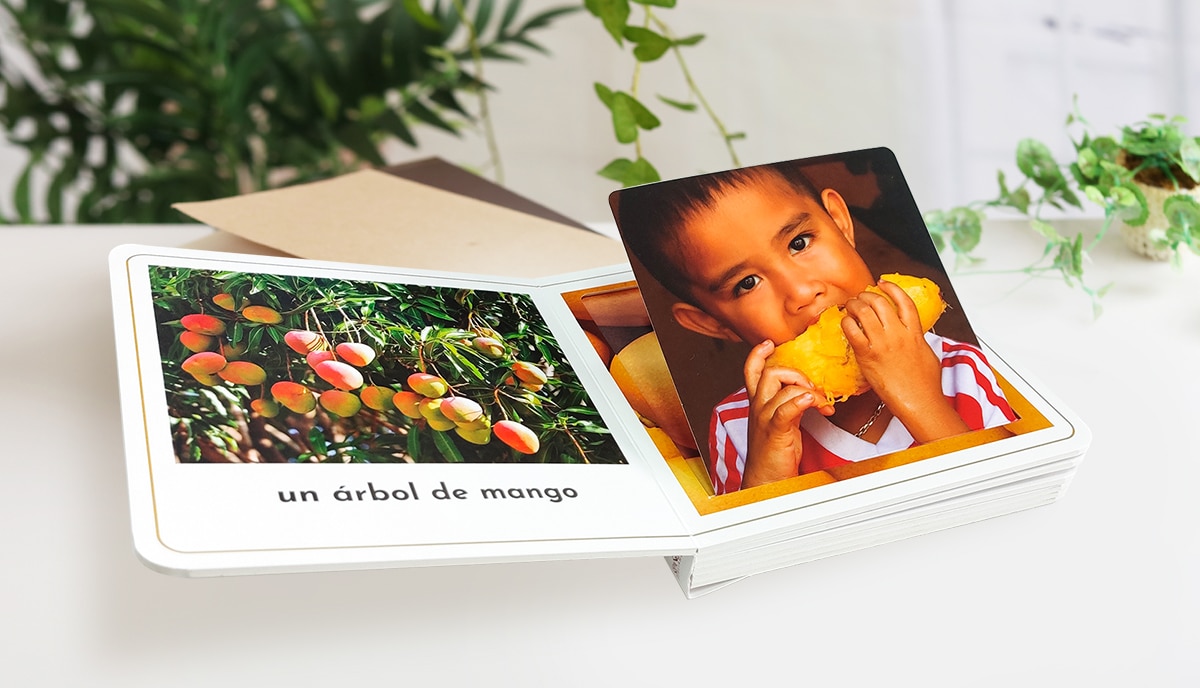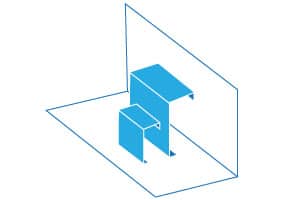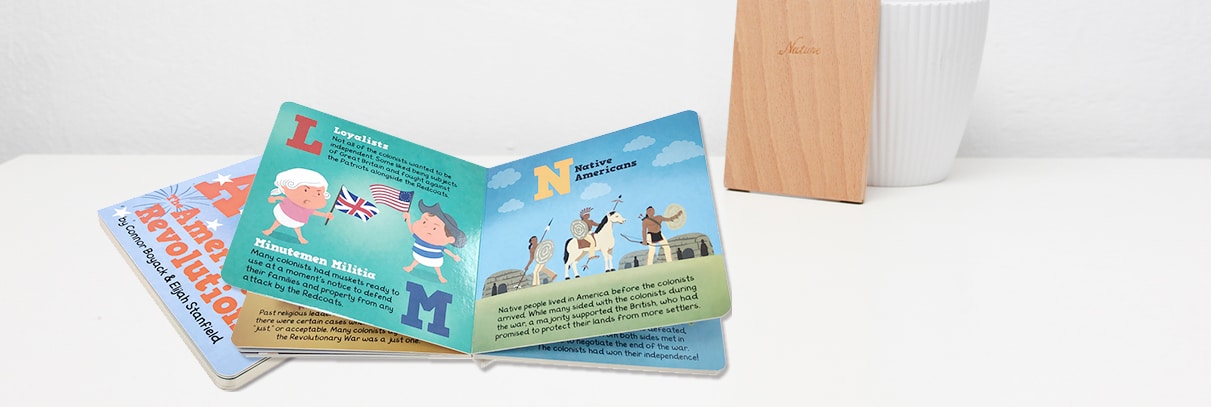Introducing the basics of good pop-up book design for mainstream publishers and self-publishers alike

As lovers of art and literature for children as much as adults — and as an international book printing company with a global reputation for excellence — we have always been fascinated by pop-up books. These books are not only visually appealing, but they also have a surprise element that makes them exciting to explore and interact with, especially for younger readers.
We work every day with talented authors and book designers creating some of the most beautiful and innovative pop-up book designs on the market. Drawing on over 25 years of success in the industry, we'd like to share with you the art of crafting successful pop-up book designs, including different types of pop-up book designs, cut and fold techniques for pop-up book designs, and step-by-step instructions for creating your own custom pop-up books.
Introduction to pop-up books
What are pop-up books? Pop-up books are more than just a book; they are a form of creative paper engineering that combines visual art and storytelling to create an interactive reading experience which delights readers of every age from babies to grandparents. They are designed to create a three-dimensional effect, causing the characters and objects to “pop up” from the pages when the book is opened. While we mostly associate them with children's literature, especially in the early years category, pop-up books are not only limited to children's books; they can also be used in adult literature and even as marketing materials.
Benefits of pop-up book design
One of the main benefits of pop-up book design — compared with, say, a standard board book — is that it captures the reader's attention and creates a memorable reading experience in a way that's unique and interactive. It's this almost theatrical, animated and interactive aspect of the pop-up book that gives it its special and enduring appeal. Pop-up books are very effective in education, too, as they encourage the reader to participate in the story, adding a multidimensional, multisensory dimension which has proven psychological and emotional benefits as a learning tool. But perhaps most important of all — they're huge fun!
Different types of pop-up book designs
Pop-ups can be incredibly simple, based on just a single fold, or they can be astonishingly complex feats of paper engineering involving multiple mechanical features with several moving parts. But as this is a basic introduction, we'll focus on the three main engineering elements which define the principal pop-up book designs. They are:
- Layered pop-ups
- Pull-tab pop-ups
- Mechanical pop-ups
Layered pop-ups involve creating layers of paper that are stacked on top of each other to create a three-dimensional effect; these may be folded or glued in such a way that they spring into life once the page spread is opened, creating the tension which pulls them out and causes them to pop up.
Pull-tab pop-ups are directly interactive elements which require an action on the part of the reader. They involve pulling a tab to reveal a hidden element in the book or to move an image or part of an image which may be hinged and to which the tab is attached.
Mechanical pop-ups involve creating a mechanism that causes the pop-up to move, almost like a simple automaton, and the movement can often be regulated by gently flexing the open pages of the book.
Of course, many pop-up books combine all of these techniques. As you can imagine, designing a pop-up book is a complex process and demands some knowledge of several skills such as origami (the art of paper folding) mechanical engineering (the way that moving parts interact) and general artistic skills (to create the images, characters, and scenery). Not to mention, storytelling, too! many pop-up books are collaborations between a writer who devises the text, the artist who creates the images, and the paper engineer and printer who handle the mechanical aspects.

Cut and fold techniques for pop-up book designs
Cut and fold techniques are used to create the three-dimensional effect in pop-up books. These techniques involve cutting and folding paper in a certain way to create the pop-up element. Some common cut and fold techniques include:
- V-folds: these mechanisms are widely used and easy to construct. Place tabs on a rectangle card to create the pop-up part. Keeping in mind that the angle must always be carefully chosen, the tabs are adhered to the backing paper. Before adhering the pop-up component to the paper, mark the angle of the fold on page, the box fold, and the angle fold.
- Box folds: these are more complex mechanisms involving multiple cuts and tabs which need to be made in the right order; some will be glued to the page, others are left free. When the page opens, the elements pop-up and fold or slot together to create a box shape. This is often the basis for a house, say, or a boat, or some other more substantial structure.
- Layer folds: these range from the very simple — a straightforward pop-up shelf — to more complex with multiple interacting layers. These use cuts in the substrate of the base paper or added elements which are folded in such a way that they move in opposition to the direction of the cover when it's opened.
There are many other techniques involved in paper craft and paper engineering. But these three are the most commonly seen in pop-up book designs. They give you an idea of the potential complexity and creative possibilities you'll encounter when you take on a pop-up project!



Step-by-step instructions for creating your own pop-up book
Creating your own pop-up book is a fun and rewarding experience. Don't let the complexity put you off. As with most complex projects, the key to success is taking the right steps in the right order and breaking down the more difficult parts into smaller units. We can't go into huge technical detail in this post, but here's a general guide to the steps you'll go through to get from the germ of an idea to a finished, printed pop-up book.
- Choose a theme or story for your pop-up book: not all pop-up books tell a story but most authors we work with choose to do so and the pop-up elements are like animated illustrations. The story and the theme, once you've worked them out, will inform the artwork and the later mechanical design.
- Create a storyboard to plan out the layout of your book: at this stage you may wish to collaborate with a professional illustrator — ideally one with experience of pop-ups — or you can create the storyboard yourself if you have the skills. But don't work up polished drawings or paintings at this stage, as things may need to change once you bring your paper engineer on board.
- Create a mockup to test out your design: now, you can either take on this task yourself or outsource it to an experienced paper engineer. Either way, at this stage you see what pop-up possibilities your story and illustrations suggest and develop provisional designs put together in a mock-up version of your book. At this stage, you may need to change some elements of the story or the images to accommodate the mechanics, and vice-versa. Think of it as a creative dialogue between the narrative, the art, and the engineering. The aim is to get everything to “agree”.
- Prepare your digital files: once you've settled on everything, it's time to generate digital files to send to your printer. These will need to include the dielines, bleed, trim lines, safe zones, and margins for the book and each individual element. Everything should then be exported as high-quality PDFs. if you're paying a pro, they should understand what they need to do to get the design files “print ready”. If you're doing it yourself, talk to us first. We'll be happy to help and guide you or we can make the files for you based on your roughs.
- Print and assemble the pop-up book: this is our main task. We'll check the files, prepare all the plates for printing, and once the materials are generated, our engineers will make and assemble all the pop-up elements.
Need more help? Let's talk!
Pop-up books are a unique and exciting form of literature, art, and engineering combined. They capture the reader's attention, create a memorable reading experience, and can be used to teach complex concepts in a fun and visual way with the art of surprise sure to delight readers of all ages.
Ready to create your own pop-up book? If you're an indie author or a small press wanting to print a pop-up book — and only the finest product, unmatched customer service, and unbeatable prices will do — we should talk. Get in touch today to chat through your needs or to ask for a no-obligation quote. We can't wait to help you make your next pop-up book the best!










